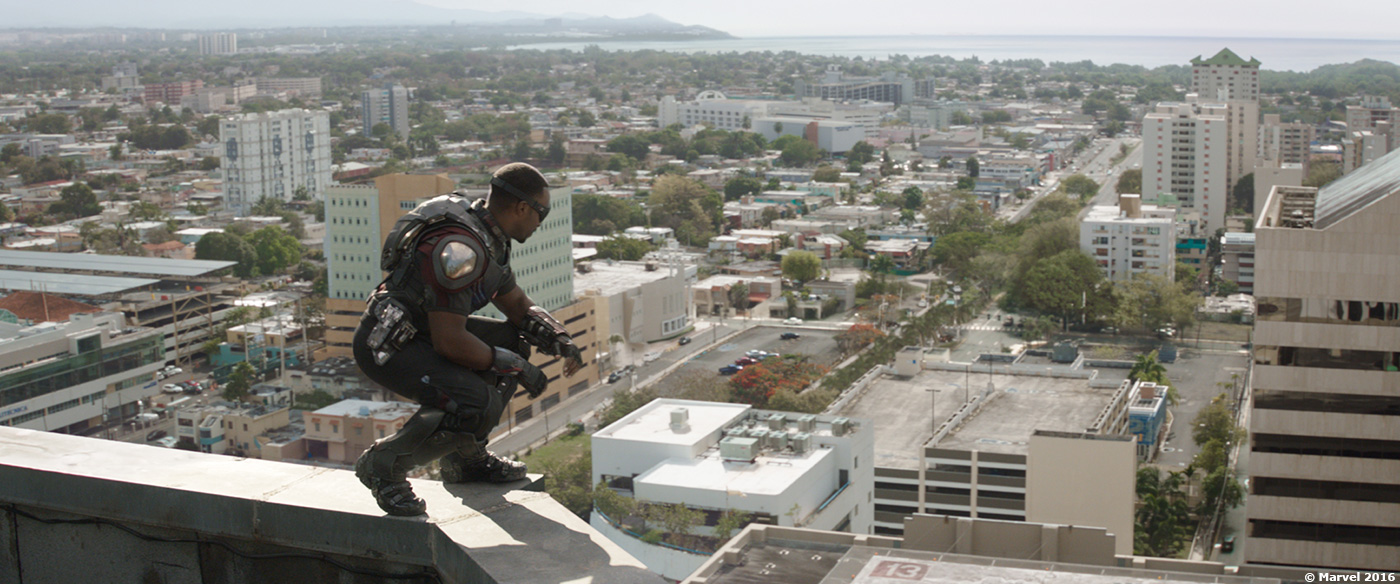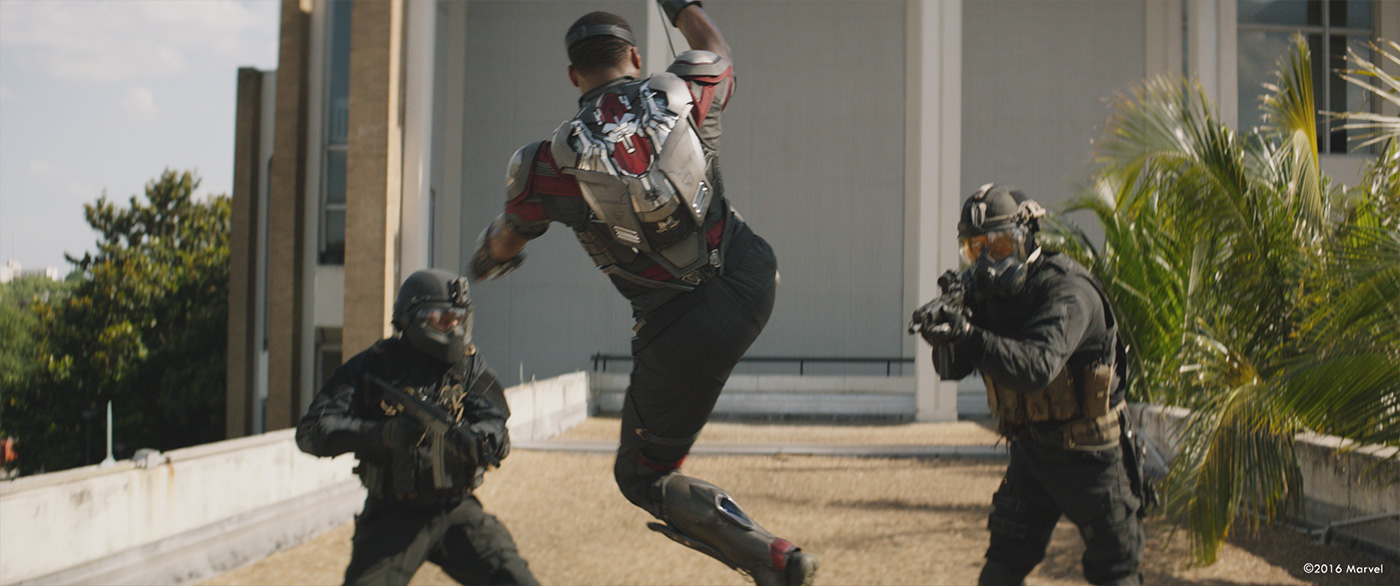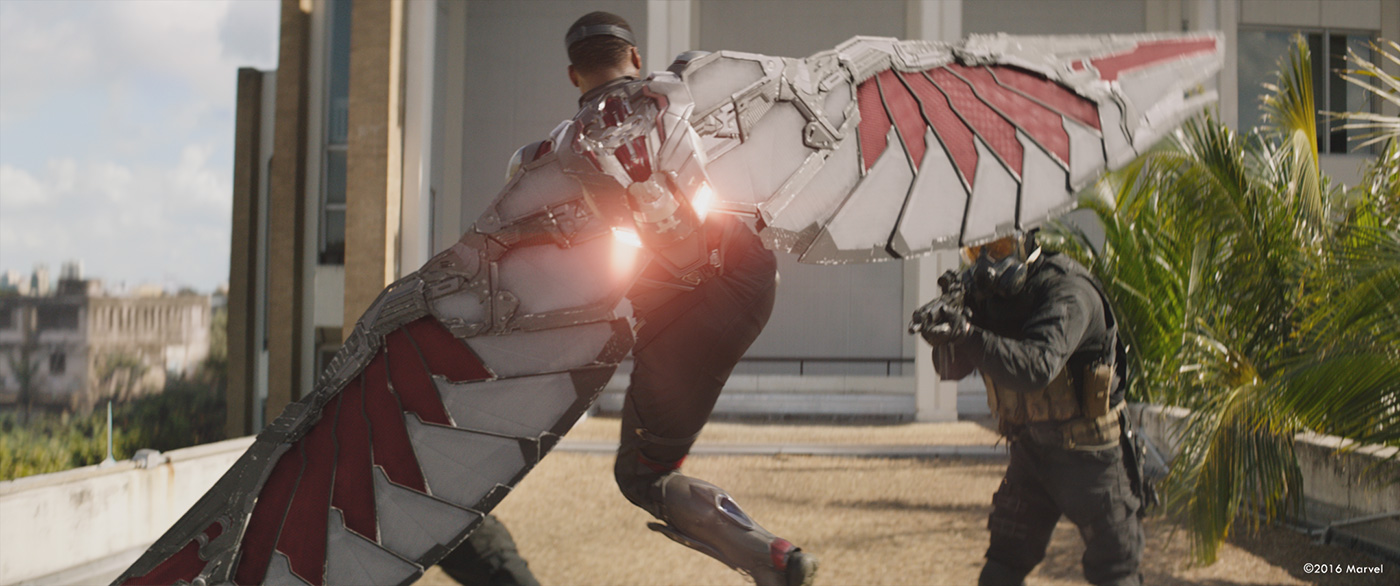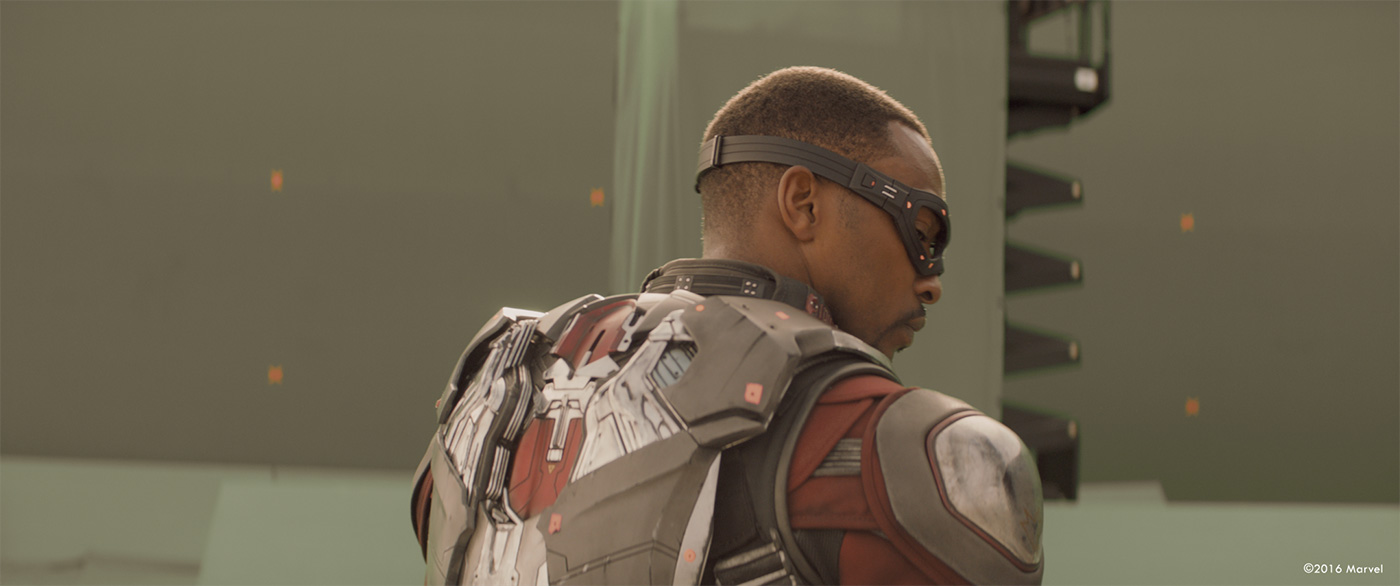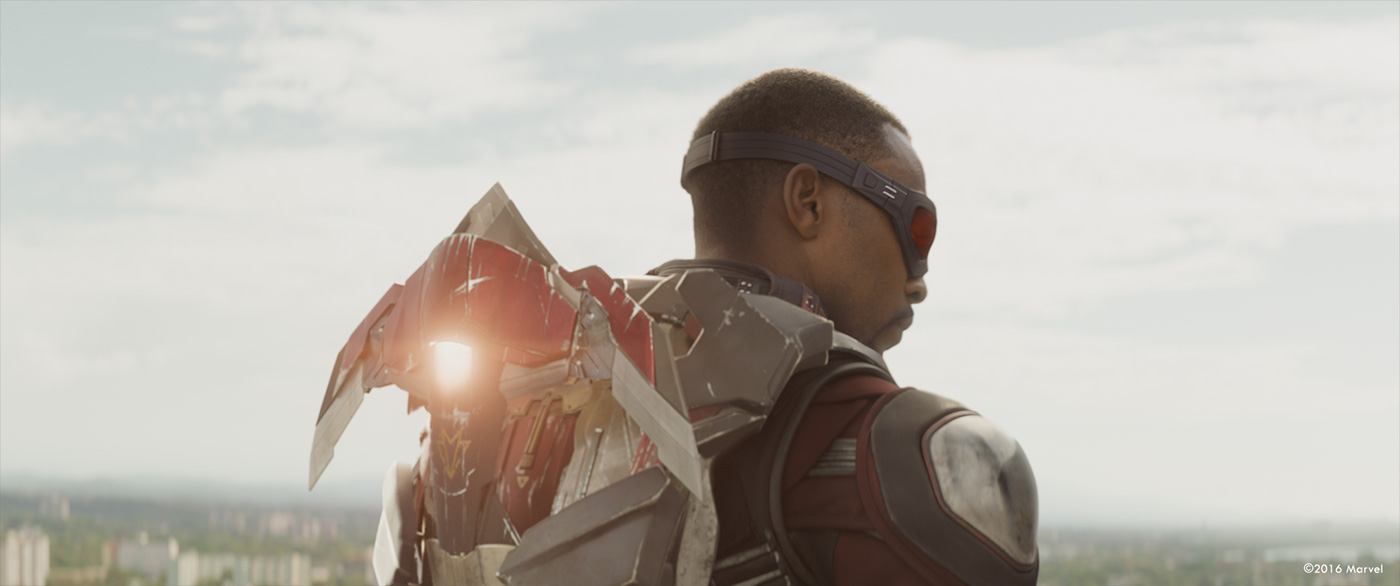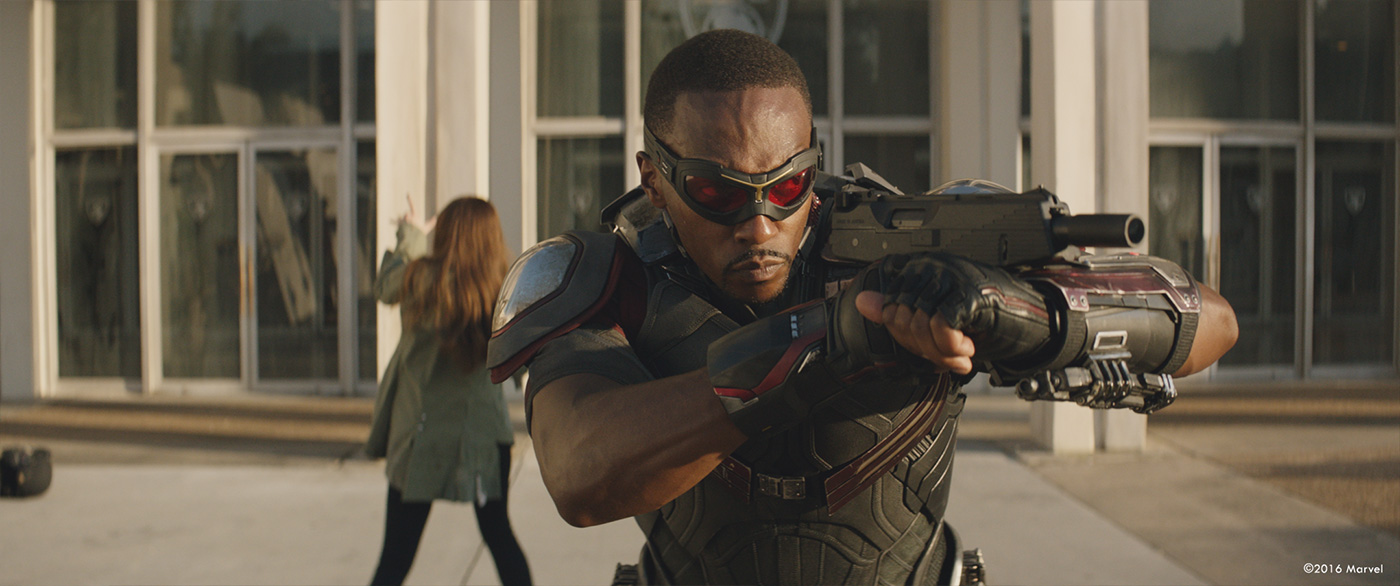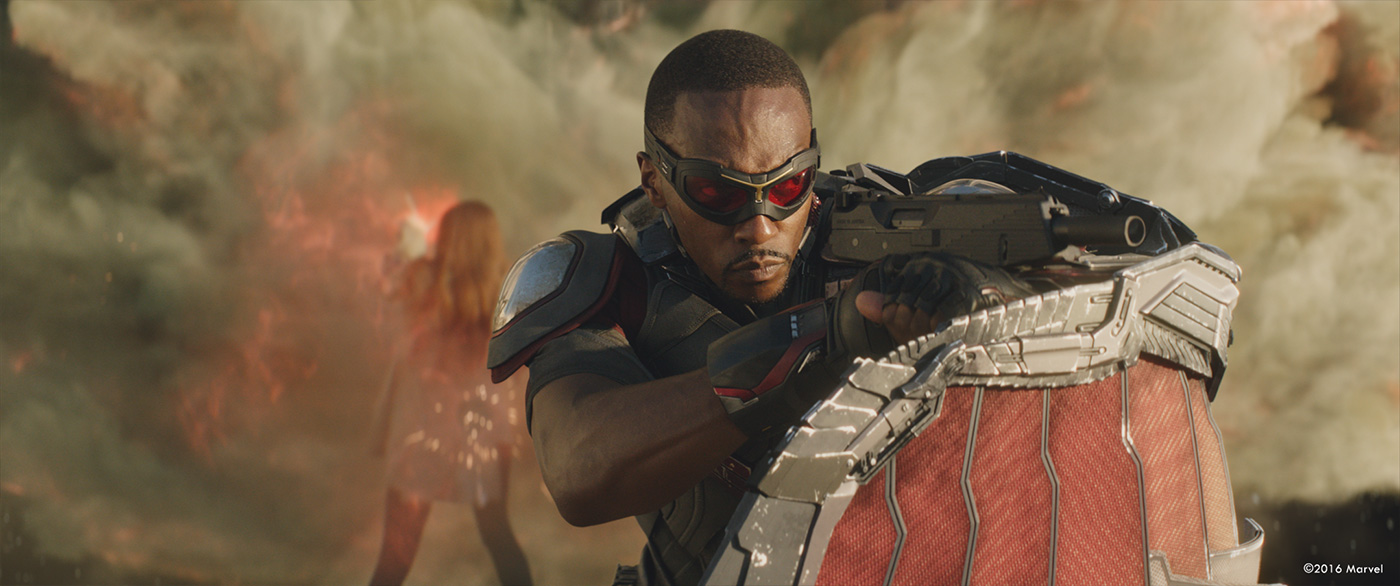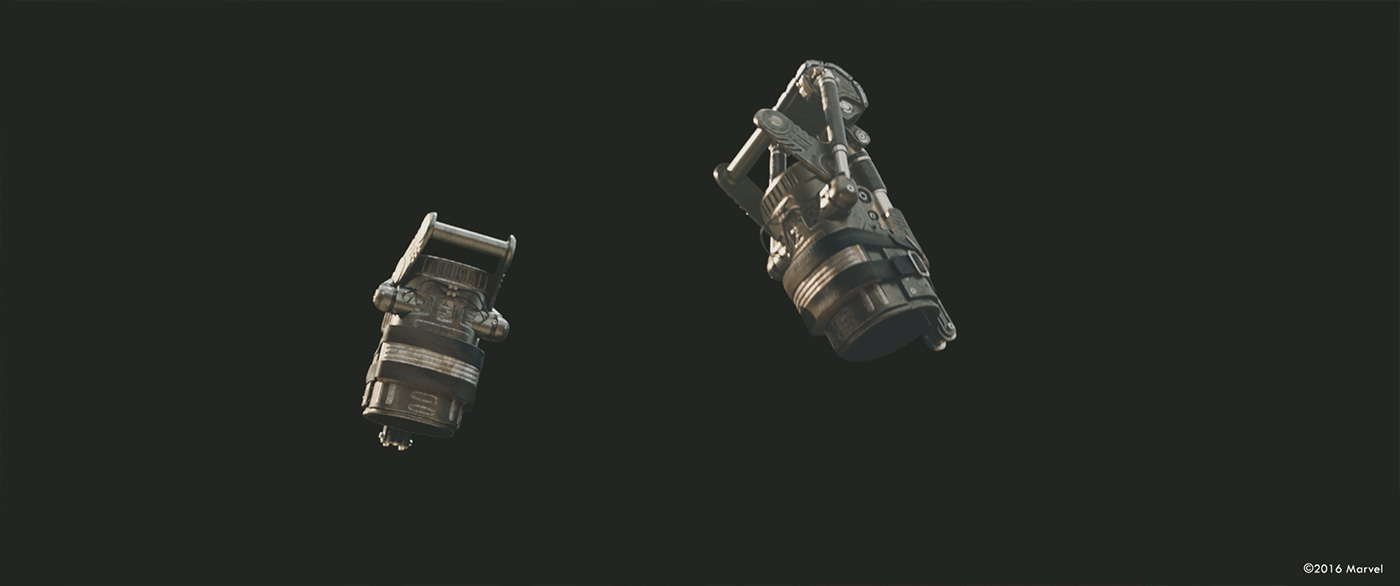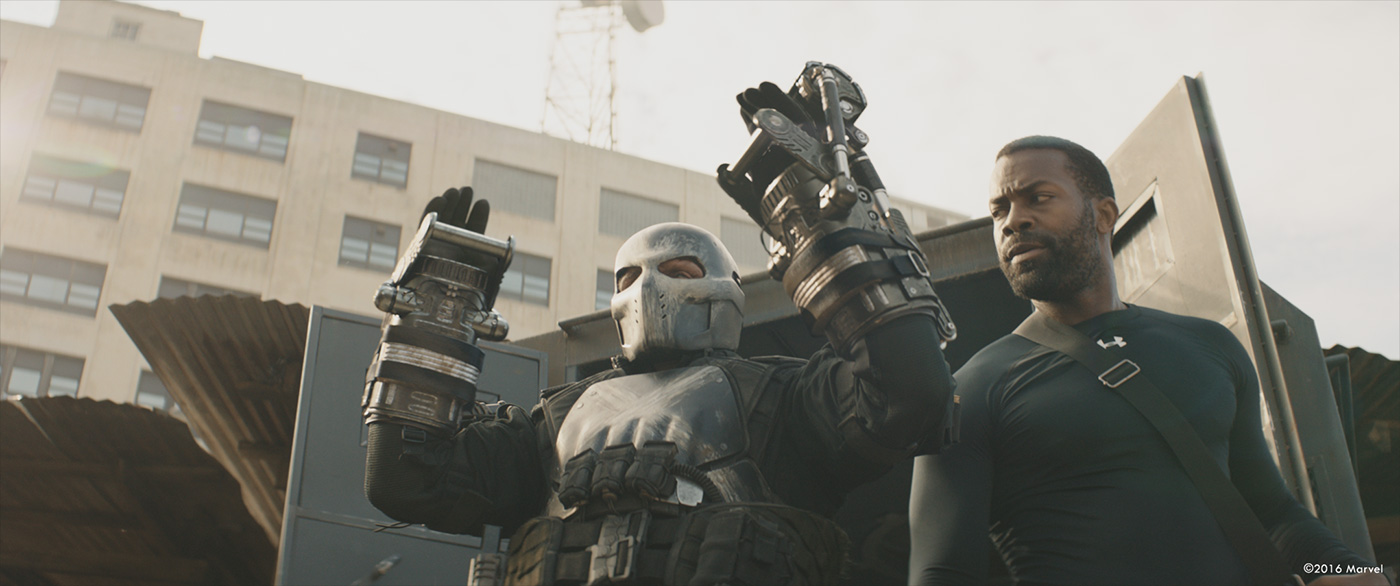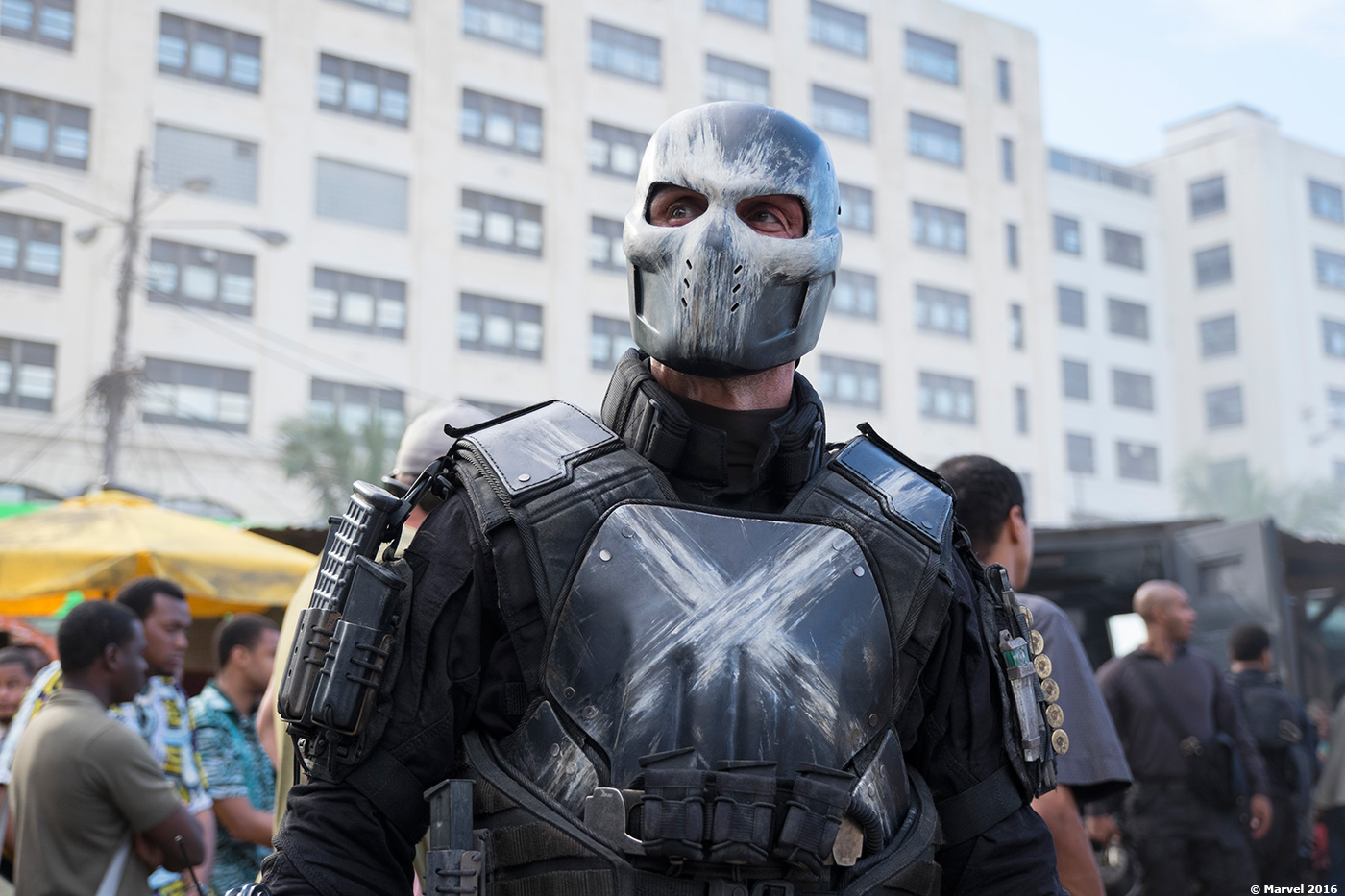Last year, Florian Gellinger had explained to us the work on Rise FX on THE MAN FROM U.N.C.L.E. He then worked on HITMAN: AGENT 47 and MANIFESTO. CAPTAIN AMERICA: CIVIL WAR is his second collaboration with the Russo brothers.
What was your feeling to work again with the Russo Brothers and VFX Supervisor Dan Deleeuw?
It was a very familiar feeling, like coming home. We were already accustomed with the way they approached the shoot, doing a lot of practical stunts to start with, and knew – also thanks to brilliant production VFX producer Jen Underdahl – that every bit along the road would be very well planned.
This new Captain America have a bigger scale. Does that change their approach about the VFX?
I guess it had a big impact on the shooting schedule and the logistics in planning talent and resources. Also, to support Dan, Swen Gillberg came on board as 2nd unit production supervisor. The show grew to almost 3’000 shots total – way bigger than WINTER SOLDIER – and so the production side did an amazing job to ramp up to face the new challenges.
Can you describe to us one of your typical day during the pre-prod, on-set and then on post?
During pre-production we’d start concepting various effects that would be required later on. We also tested our infrastructure and made sure that working with our (back then newly opened) office in Stuttgart would be as smooth as possible.
On set I stuck most of the time with Swen and 2nd unit to help supervise the Falcon and Black Widow fights. We also made sure to capture as much reference footage, HDRs and panoramas as we possibly could. When production moved from Atlanta to Berlin, Marvel set up their editorial at our office.
During post I’d be looking at shots (go figure…), trying to stay on top of editorial changes. Also, with so many different tasks on our slate, I’d be the one balancing the workload between departments and setting priorities.
What were the sequences made by RISE?
We did the entire Lagos Hazard Heist sequence (with help here and there from Lola, Cantina Creative and BOT) that involved Rumlow’s return as the first villain “Crossbones” in the film.
How did you approach the Lagos sequence?
Knowing the entire sequence would be shot in Atlanta, Georgia supposed to look like Lagos, Nigeria and using The Third Floor’s previs as the best starting point, we planned for complete environment replacements or enhancements. At the same time we needed to build digi-doubles based on photogrammetry for Falcon, Crossbones and Scarlett Witch, develop the Scarlett Witch magic established in AGE OF ULTRON for new scenarios and to make poisonous gas art-directable.
Can you explain in details about the creation of the huge city environment?
Production scheduled a texture, LiDAR and plate shoot in Puerto Rico to collect architectural reference and backgrounds to be used for our digital Lagos environments. From there it was a mix-and-match using buildings and locations from Puerto Rico to replace or extend the Atlanta locations. We needed to build a 270 degree environment for Falcon’s look-out on a skyscraper, backgrounds for Captain America’s hotel room and a café that Scarlett Witch and Black Widow are sitting in, the road to the “Institute for Infectious Diseases” (IFID), the 360 degree environment around the IFID and enhancements to it’s façade and front gate, the escape road to the market and finally the 360 degree market place environment with stalls, apartment buildings and an office building including furnished (!) CG offices inside. Some of the selected buildings were built as high resolution assets when they needed to be destroyed or lit in various angles, some were re-projected in 2.5D in the distance. For helicopter shots showing all of Lagos we used our scattering tool in Houdini to distribute thousands of houses rule-based along a street grid. CG Supervisor Oliver Schulz used cloud shaped geometry to cast shadows here and there on the city scape, making it look more varied in sunlight intensity and alive. Of course the environments also needed CG crowd, CG traffic and moving CG trees to make them believable. Compositing supervisor Jonathan Weber made sure to stay close to the reference footage in terms of color palette to stay true to the raw action look needed for the sequence.
How did you created Falcon and especially his wings?
Falcon’s face and suit asset was based on a photogrammetry scan from Direct Dimensions. However – the wings only existed as a miniature prop built by Legacy to shoot lighting references along with the chrome ball. Production sent us ILM’s Falcon asset from ANT-MAN as a starting point. Since Falcon’s wings were also going to be used in extreme close-ups and in the new “shield-mode” to dodge bullets we needed to re-design them completely, breaking them up in more individually movable parts. Since the design had to be function-driven we handed the design task to our animation supervisor Alexander Schumann. He then analyzed where the wings would have to fold in order to give us a great folding animation when disappearing into the backpack and also giving us the options of a one-wing-shield and a two-wing-back-shield. Once the design along with the animation was approved we started detailing the different materials. The cells where supposed to be made up of a cloth type material attached to a frame. The cloth had to bulge under wind and air friction. We realized that part using blend shapes rather than a cloth sim to be able to art direct it where needed.
Can you tell us more about the digital doubles creation for the super-heroes?
We built Scarlett Witch and Crossbones starting with a photogrammetry scan, just like we did with Falcon. For Scarlett Witch we also needed to give her believably moving clothes and hair as she was supposed to fly through the air. Crossbones’ costume is made up of many individual parts like belts, armor and shells – all things that the 3D scan triangulates as one closed surface. So here we needed to break up the scan first and to finish all the bits and pieces separately. His hydraulic punching gauntlets also needed to be build for animation so that he could arm, extend and retract them. For Captain America we received the final asset from ILM, re-rigged and re-shaded it and imported it into our pipeline.
Falcon is using a drone called Red Wing. Can you explain in details about its creation?
Legacy built a RedWing miniature for lighting references – just like they did for Falcon’s wings. Because the drone is stored in Falcon’s backpack we needed to design a detaching and launching animation for the backpack and RedWing. With the backpack being as slick as it is and a drone’s wings taking up a little more space we needed to fold RedWing quite a lot to fit. Also, when RedWing shoots one of the Mercenaries it uses railguns stored in it’s wings. So we not only needed to come up with a concept for the guns but also for how they fit into that little drone.
How were filmed the aerial shots for Falcon and Red Wing?
The aerial shots were filmed using a camera drone carrying a RED camera with a 6K Dragon sensor.
The super-heroes are fighting against many soldiers. How did you enhanced this fight?
Three of the mercenaries were replaced with digi-doubles to toss them around. Building the assets for the mercenaries required the same approach as with Crossbones – detaching and detailing all the individual little parts making up their suits. But once we had them built and animated we could also run simulations with Scarlett Witch magic or Black Widow bite effects over their surfaces. However – most of the choreographed action is real, executed by the amazing stunt team. Parts of the action was filmed using wires that we later removed.
Scarlett Witch comes in action with her magic. Can you explain in details about it?
Her magic is made up of various elements. We started with roto-matching her hands for every shot she uses her powers in. On the palm of her hands she’s got a frenetically oscillating orb of light hovering. That orb is emitting waves of particles, similar to nebulas in space. When she moves her hands these effects need to trail her motion and all of these elements need to light her hands interactively. Based on this design she also creates a force field shielding her from bullets, wraps poisonous gas, a mercenary and a big explosion. All these scenarios needed to look consistent in design – but needed completely different technical approaches.
How did you enhanced her magical effects since Avengers: Age of Ultron?
In AGE OF ULTRON, she uses her magic to manipulate the Avengers and to tear the Sub-Ultrons to pieces. Her story in CIVIL WAR is that she has learned more about her powers and is now better at controlling them – enabling her to control bigger objects with a greater visual impact. The result was that we took the original design from Avengers as a guide but went for something with a much bigger scale.
The bad guys are using a toxic gas. Can you explain in details about its creation?
The gas was all done in Houdini using Pyro. For the shots inside the IFID we used slowly moving fluid containers and tracked the cameras and LiDAR scanned sets in. The gas was rendered as deep exrs to have full control over holdouts and defocus and our Stuttgart unit compositing supervisor Paul Schlie made sure light sources scatter correctly in the gas. Because we also needed to be able to art direct and animate the gas as moving tendrils when Scarlett Witch pulls the gas out of the IFID we decided for these shots to use a spline based approach. In parts the gas was emitted along the splines, other bits of the volume were dragged along using forces. On top of the volume’s surface we ran the secondary Scarlett Witch magic simulation wrapping the gas into red particulate.
Crossbones is using many weapons and augmentations on his armor. Can you tell us more about that?
Because Crossbones is wearing his hydraulic punching gauntlets the whole time during his fight with Captain America we replaced his lower arms carrying the prop gauntlets in pretty much every shot. When the gauntlets are retracted they are “armed” – meaning that when they touch something the extend by almost two feet and crush everything in their way. He reloads them by moving his elbows as if he’s reloading a pump gun. Both gauntlets also feature additional weapons – one has a spike, the other a blade extending like a spring knife. When Captain America is hit by Crossbones’ gauntlets we bent his whole body around the gauntlet for a more brutal impression. There is also a moment when Crossbones misses Captain America’s face by a couple of inches and punches a big hole into a wall – requiring the wall to be replaced digitally for a Houdini dust and RBD simulation.
How did you created this explosion that is contained around him at the end of the fight?
The tricky part about the explosion was that it needed to look like it’s running in real-time – yet it’s being pushed back by the Scarlett Witch force field around it and causing our FX supervisor Andreas Giesen to have one or two sleepless nights. We simulated several ever-expanding explosions to keep the dynamics intact – and then translated them back into their origin at the speed that they were expanding with, resulting the outer surface of the explosion to remain in the same spot the entire time. Korbinian Hopfner, our FX TD responsible for the force field around the explosion, went for a more frenetically moving simulation showing under how much pressure the force field is. Here and there the explosion even punches holes into the force field causing solar flares to erupt.
The sequence ends with a tragic explosion on a building. How did you created this explosion and destruction?
The building was already built for destruction including all underlying layers of cabling and rigged façade elements to drop once hit by the shockwave. There were several simulations we needed to run for the explosion to feel big: windows needed to shatter, office furniture and piles of paper needed to be tossed around inside, dust had to be kicked up into the air, window frames needed to be displaced and bent and of course the explosion itself was split up into the fire inside the building and the explosion extending from Crossbones vest. Swen Gillberg had the brilliant idea to have these effects offset specially as individual events – just as SFX would do it if you were to shoot it practically. So the result was something that stuck with the aesthetics we all know from watching movies, making it larger than life.
Can you tell us more about your LiDAR work on the Leipzig airport?
We scanned the entire airport with two LiDAR scanners and two robotic DSLR panorama heads for an entire week in late 2014 to give production something accurately measured to base their previs on. That enabled them to work with real camera angles at the airport preparing the shoot from 10.000 kilometers away. During the shoot in August 2015, we scanned some more areas of the airport in detail per request from ILM.
Was there a shot or sequence that prevent you from sleep?
Not specifically an individual shot – but what really gave me a headache was the number of characters, effects and environments we had to tackle. Nothing we hadn’t done before – just an insane amount of stuff to keep under control.
What do you keep from this experience?
I’m incredibly proud of what we’ve accomplished. Our sequence is so much fun to watch and there is so much going on in every single frame – it’s hard to grasp. Working with Dan, Jen, Swen and the Marvel gang never feels like work – it feels like pushing together for something great.
How long have you worked on this film?
From November 2014 doing the LiDAR scans of the airport to March 2016.
How many shots have you done?
Well over 300.
What was the size of your team?
Roughly 120 artists.
What is your next project?
I’m currently working with director Gore Verbinski on A CURE FOR WELLNESS.
A big thanks for your time.
// WANT TO KNOW MORE?
– Rise FX: Official website of Rise FX.
© Vincent Frei – The Art of VFX – 2016



